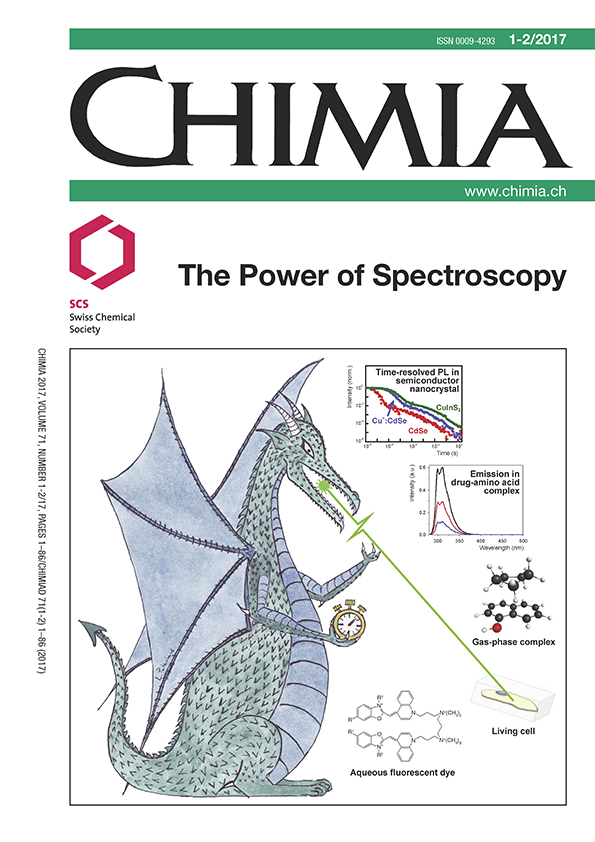Water in Biomolecular Fluorescence Spectroscopy and Imaging: Side Effects and Remedies
DOI:
https://doi.org/10.2533/chimia.2017.26Keywords:
Aggregation, Fluorescence, Heavy water, Quenching, WaterAbstract
Historically, many of the classical organic fluorescent dyes were developed as laser dyes and characterized and optimized in organic solvents. Since then, fluorescence has, however, found a vast range of applications in the life sciences in which the fluorophores are usually surrounded by water and not by organic solvents. The omnipresence of water in biomolecular fluorescence spectroscopy and imaging leads to some unwanted but nonetheless unavoidable consequences on the photophysical properties of the dyes, which may impact the quality and complicate quantitative interpretation of the experiments. This paper discusses and illustrates with examples two such water-induced phenomena, namely chromophore aggregation in water and fluorescence quenching by water, as well as some ways to overcome them.Downloads
Published
2017-02-22
Issue
Section
Scientific Articles
License
Copyright (c) 2017 Swiss Chemical Society

This work is licensed under a Creative Commons Attribution-NonCommercial 4.0 International License.
How to Cite
[1]
Chimia 2017, 71, 26, DOI: 10.2533/chimia.2017.26.







